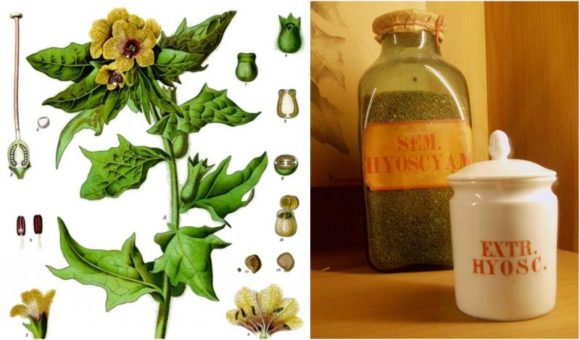All About Henbane, the “flying ointment” of witches
Listen up witches, here’s the scoop on henbane, “the insane seed that breedeth madness”…
From The Vintage News,
Henbane: Egyptians smoked it, witches used it for “flying ointment,” and it poisoned Hamlet’s father
by Magda Origjanska
“The dose makes the poison, the ancient pharmacists once said. Even the most poisonous fauna that Mother Nature produces can be beneficial if used judiciously. The word poison may evoke thoughts of sudden, painful death, but for centuries herbalists and healers exploited the power of natural toxins and venoms as medicine.
Moreover, it is no secret that some “notorious” substances played a hallucinogenic and psychotropic role too. Most of us are quite familiar with the fact that Coca-Cola’s older variants (1886-1929) contained cocaine in varying amounts. At the time cocaine was considered a legal medicine, and it wasn’t the first drinkable product that used the coca plant in its formula.
Among the numerous plants of this kind was henbane, which during the Middle Ages was widely known as “the insane seed that breedeth madness,” although today it is recognized for its contribution to the development of modern medical painkillers…”
Click here for the rest.
Share



